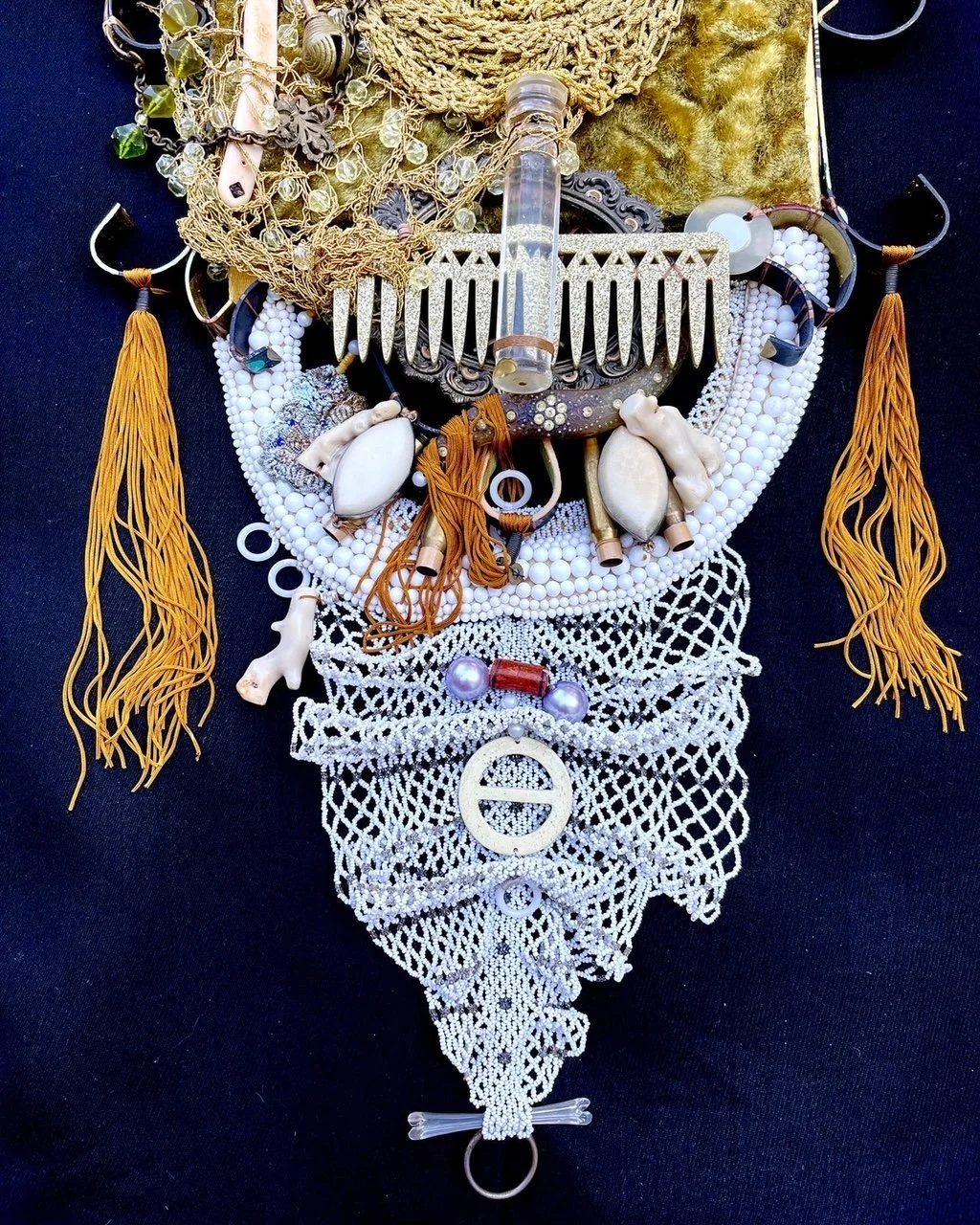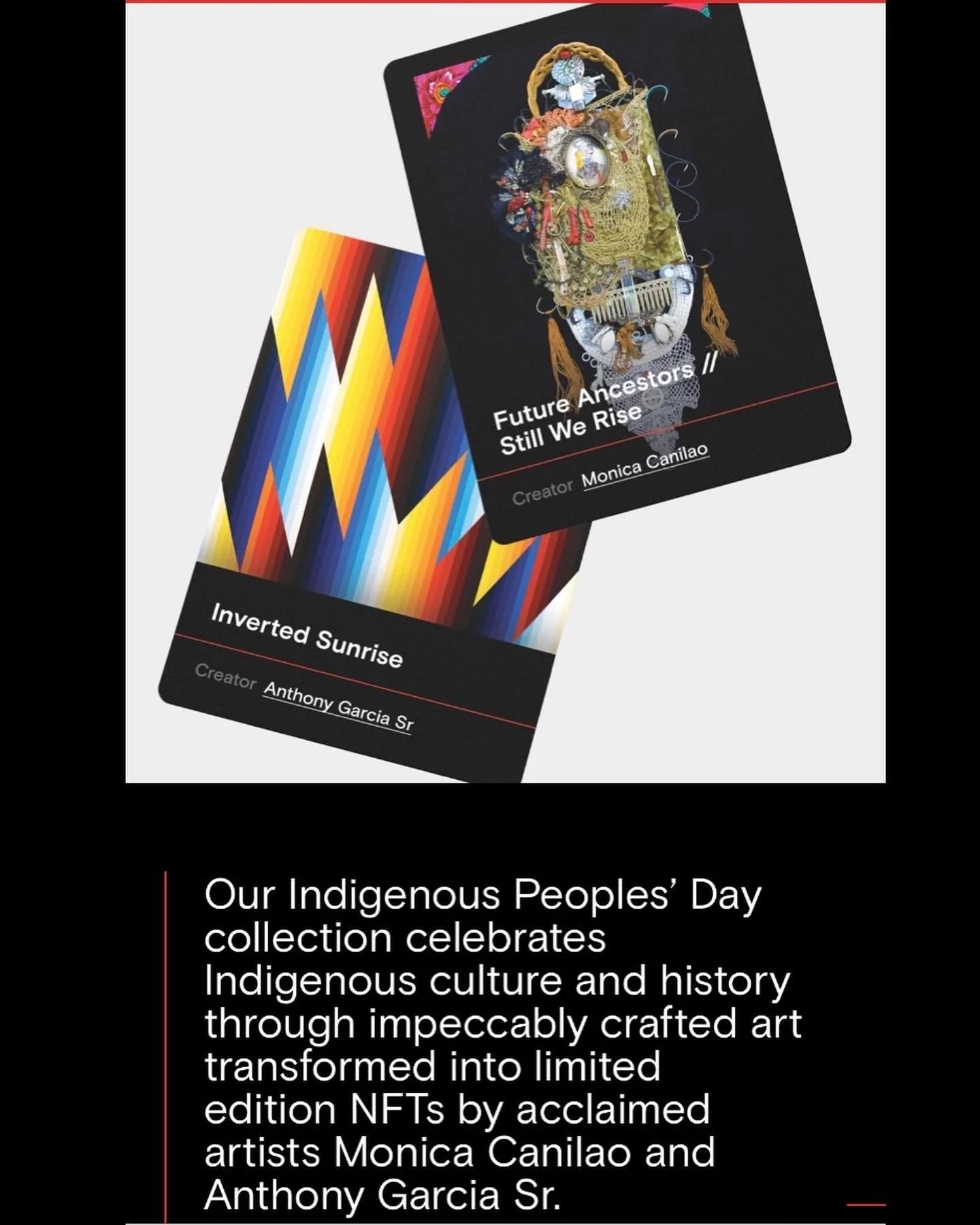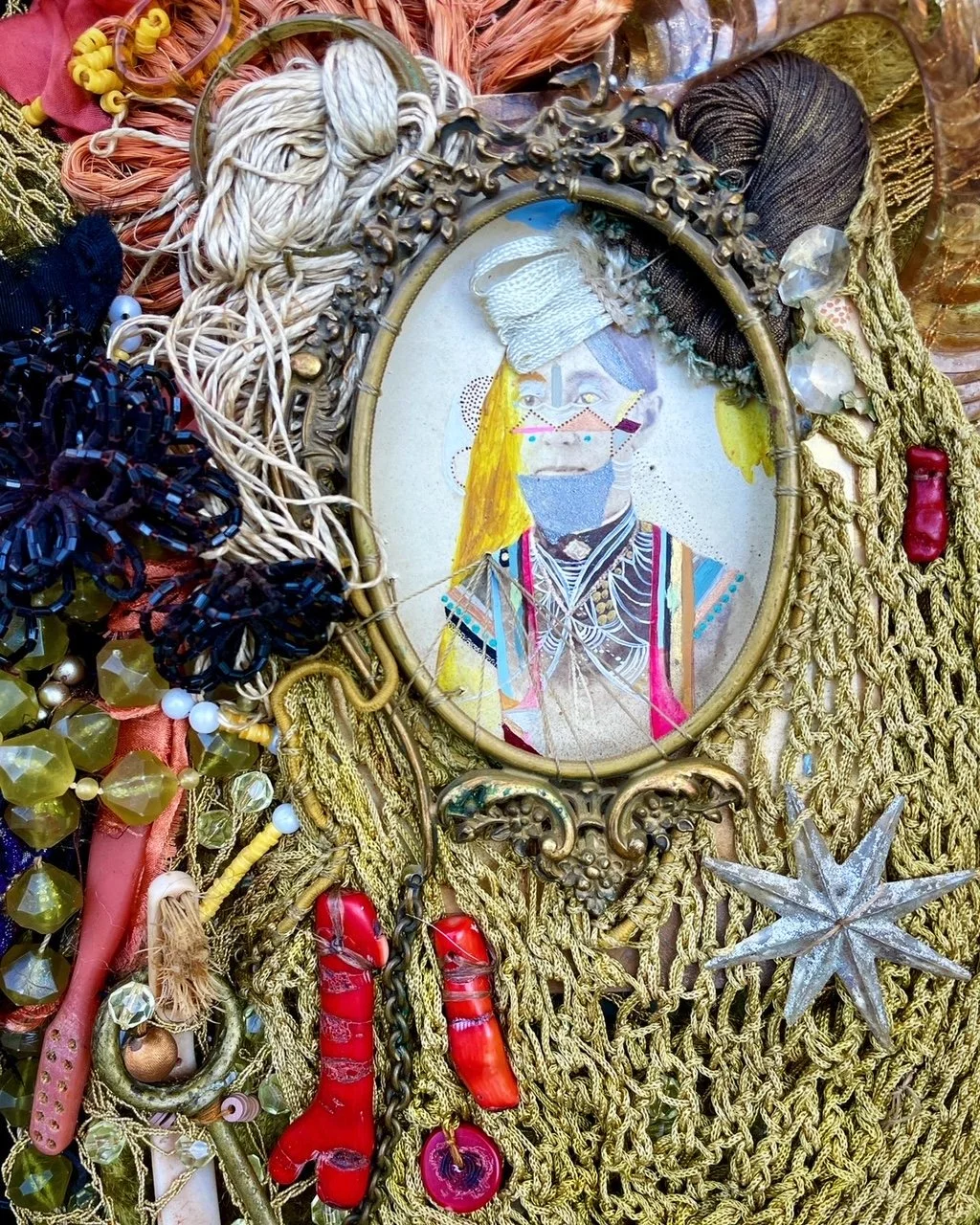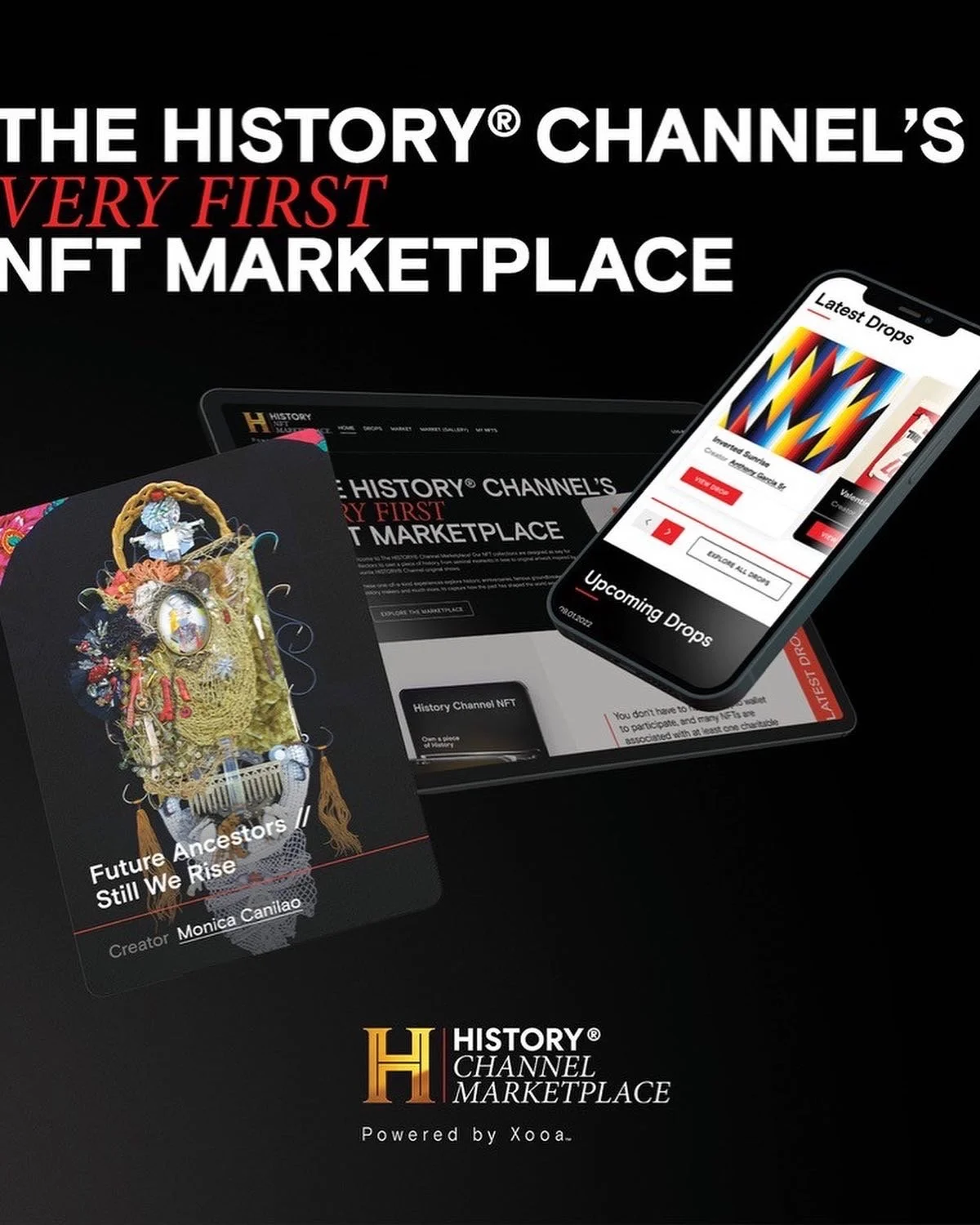
Future Ancestors/// Still We Rise
Monica Canilao collaboration with The History Channel for Indigenous People's day
Indigenous Peoples’ Day commemorates the history and contributions of Native Americans.
Future Ancestors // Still We Rise
Description: Indigenous knowledge is about the interconnectedness of all things, utilizing what is available, and storytelling. I have been working on this portrait series for 20 years, using reclaimed formal vintage photographs as the starting point. I find these black and white portraits in abandoned houses, in discount bins and flea markets. Formally-staged portrait photography was a sign of wealth in the early 19th century. In the American context, this wealth was derived, directly or indirectly, from settler and colonial activities.
The act of taking the found portrait of a forgotten figure and surrounding the individual with objects that stretch into futures that person couldn’t have fathomed, works to shift their context and prolong the spirit from fading away. These reimagined narratives don’t prioritize the portrait sitter’s frame of reference as a solitary figure lost to time. Rather these fantastical transformations reconstruct them, creating new storylines full of possibilities. These new histories and embellishments recreate the narrative. They shift the white formal portrait gaze into an alternate past where instead the colonizers adopt indigenous ornamentation, styling, and modes of living. In kind, these designs and objects worn outwardly relayed the stories of that person's life, accomplishments, individuality and experiences, as many tribal regalia around the world does.
Historical references: Two pieces sewn into the fabric of this work include the black silk hand embroidered floral ribbon and the white beadwork netted collar piece; created by Bertha LaMers and gifted to the artist by her great granddaughter, Joan LaCasse.
Bertha LaMers opened La Mers’ Studio in New York in 1909, where she taught women how to reweave, bead, and repair any textile. Her thriving business—at a time when women-owned companies were rare—created clothing and textiles for luminaries like Nat King Cole, Eleanor Roosevelt, Joseph Pulitzer and the family of Jacqueline Bouvier Kennedy. She was a businesswoman at a time when that path was often not feasible, and she was an artist extraordinaire with a needle and thread.
The HISTORY® Channel Collection's NFTs are rooted in history, allowing you the experience of discovering and ultimately owning a moment in time.
The holiday’s origins date back to the 1970s, as part of a wider effort to reshape the historical narrative surrounding the violent colonization of the Americas and to act as a counterpoint to Columbus Day celebrations, which many indigenous groups consider culturally insensitive. Observed in the U.S. on the same day as Columbus Day, Indigenous Peoples’ Day has been adopted by a growing number of states to honor the remarkable resiliency and historic achievements of native populations.



